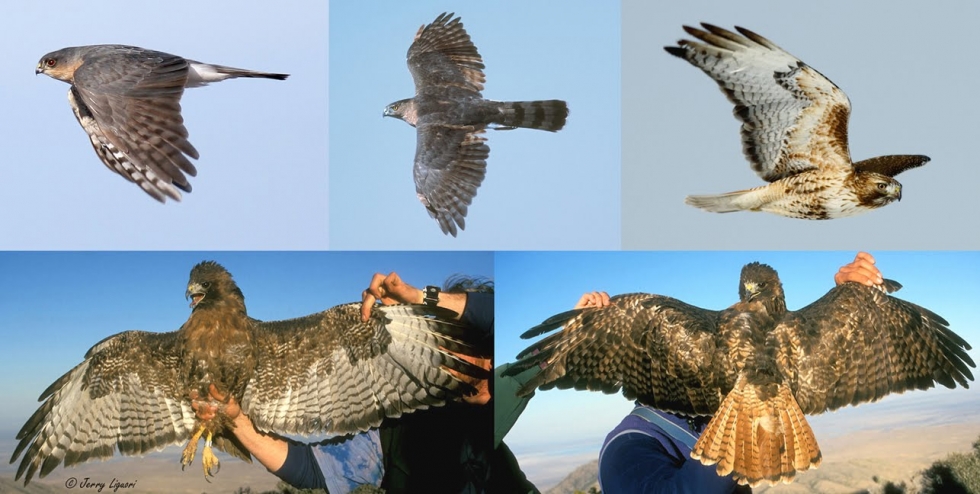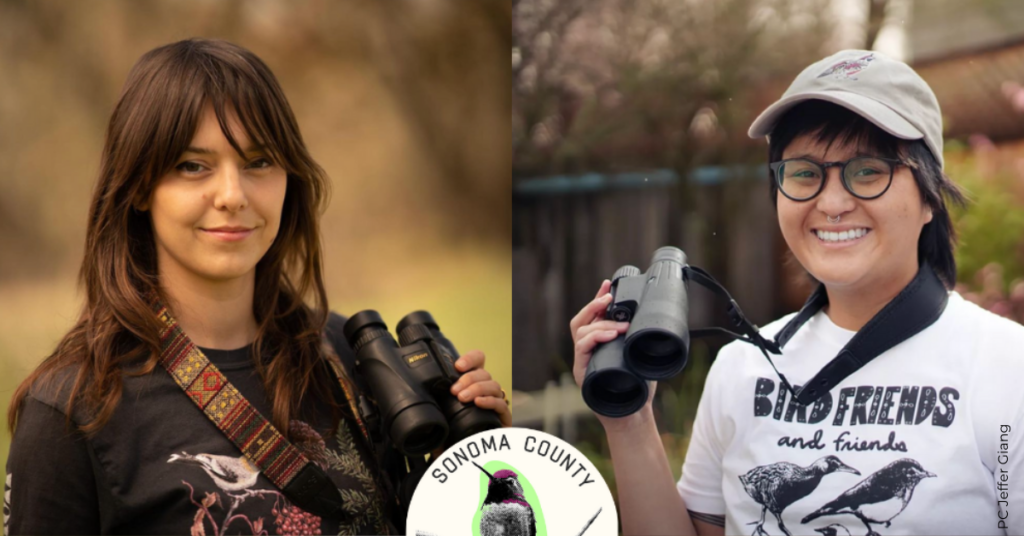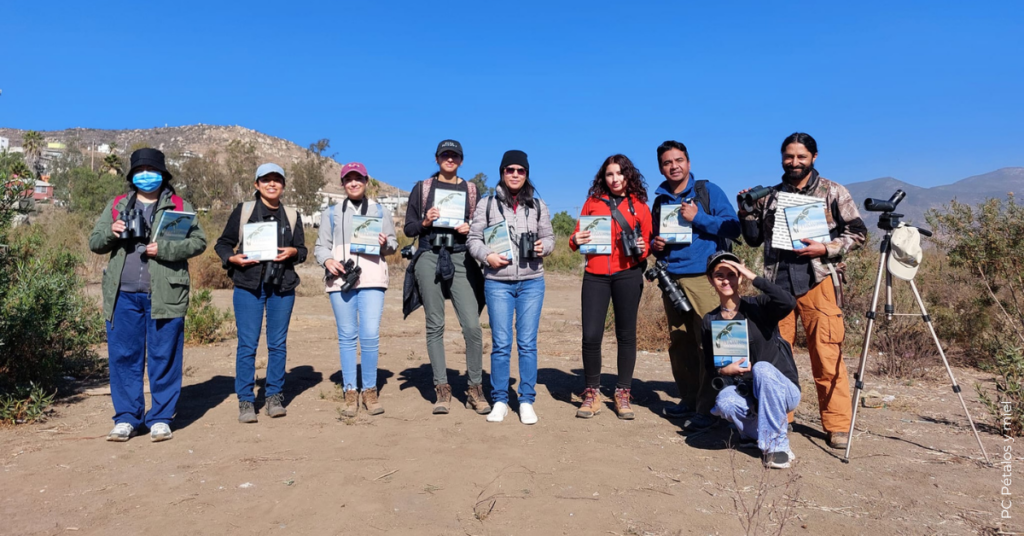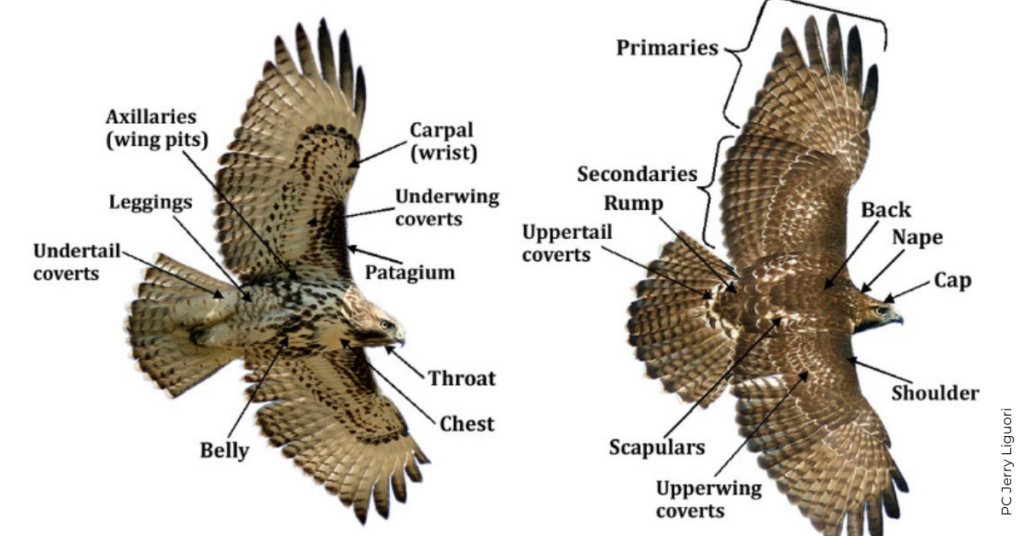
I want to comment on something that is difficult to see in the field but often obvious in close-up photos. For many raptors, eye color differs between juveniles and adults. This is true for Bald Eagles, female Harriers, accipiters, many buteos, and a few other species to a lesser degree. Birds such as falcons have the same eye color for life. Eye color change takes longer in some species than in others and varies between individuals and often sexes.
Anyway, take a look at the corresponding photos…the adult Sharp-shinned Hawk on the left has a dark red eye indicating that it is an older adult. It shows faded inner secondaries and darker bluish ones as well. The faded feathers are retained adult feathers from the previous year, and the newer ones were acquired this year. So, this Sharpie has two different ages of adult feathers, making it at least 2 years old and by the darkness of the eye, probably older.
Now, look at the Cooper’s Hawk on the right. You can see it wears adult plumage, but the eye color is yellowish, indicating that it is likely (but not always) in its first year of adulthood. Now look at the brownish secondaries and primaries (which are more boldly banded than the darker, bluish ones); they are retained juvenile feathers from the previous year, making this bird just over a year old. So, as is typically the case, the eye color for these birds matches the molt. A way to double-check this is by understanding the order in which each bird molts its flight feathers. But that is a longer post for another day. Let’s just note that secondaries 3, 4, 7, and 8 (right wing) and primary 10 of this Cooper’s Hawk are juvenile feathers – proper sequence for a bird in its second year.
The same is true for the Red-tailed Hawks above. The light bird has retained juvenile outer primaries 7-10 (paler and unbanded) and secondary 3 and 4 making it a 2nd-year bird (in its first adult plumage), and has a pale eye. The darker bird has a brown eye and two separate ages of adult flight feathers (paler faded ones and darker newer ones).
This post was written by Jerry Liguori. You can read more about Jerry and his legacy at HawkWatch International here.



